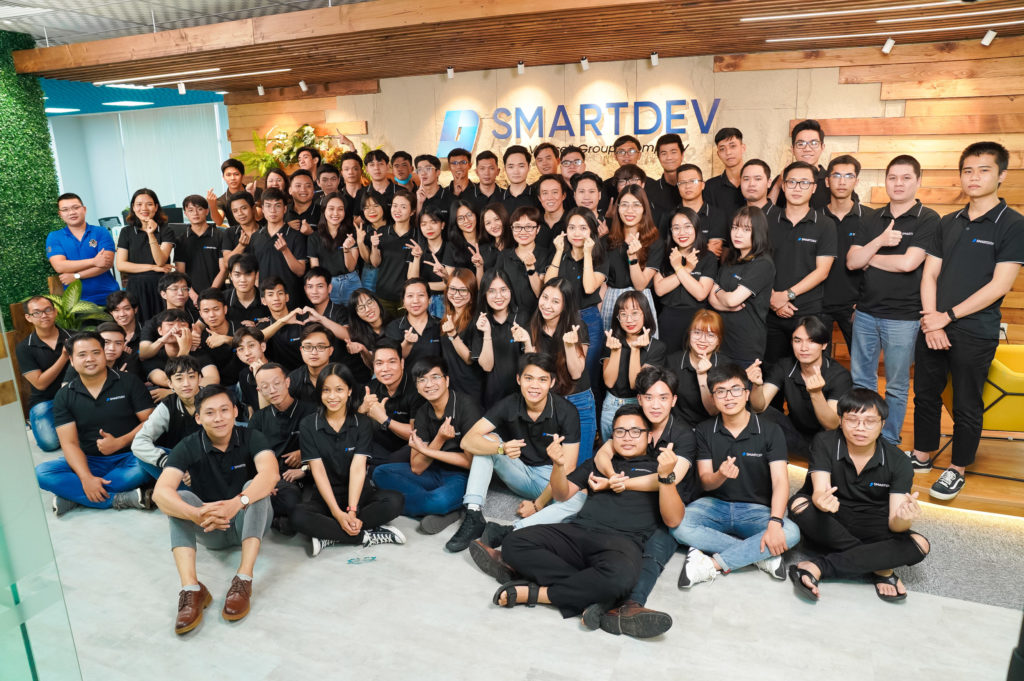The Crucial Role of Application Management Services (AMS) in Optimizing Application Lifecycle Management (ALM)
In today’s rapidly evolving digital landscape, businesses are increasingly relying on technology platforms and applications to streamline their operations and stay competitive. However, managing these applications throughout their lifecycle can be a daunting task. This is where Application Management Services (AMS) come into play. AMS offers a comprehensive solution to optimize Application Lifecycle Management (ALM) by providing businesses with the expertise, tools, and support necessary to ensure the smooth operation and continuous improvement of their applications. In this blog post, we will explore the crucial role of AMS in optimizing ALM and how SmartDev, a leading provider of AMS solutions, can help customers achieve their application management goals.
A Holistic Approach: Exploring the Phases and Significance of Application Lifecycle Management (ALM)

Before we delve into the pivotal role of Application Management Services (AMS) in optimizing ALM, a comprehensive understanding of what ALM entails is crucial. Application Lifecycle Management (ALM) represents a holistic, integrated system approach that supervises an application’s life from its inception to its cessation. This lifecycle management is pivotal for navigating the complex technology landscape that businesses face today.
The Inception Phase: Ideation and Requirements Gathering
The journey of ALM begins with the inception phase, where the primary focus is on ideation and requirements gathering. This stage is about understanding what the application needs to do, the problems it aims to solve, and the requirements it must meet to be successful. Stakeholder input is crucial at this stage to ensure that the application aligns with user needs and business objectives.
The Design Phase: Blueprinting the Application
Following the inception phase is the design stage, where ideas and requirements translate into a tangible blueprint. This phase involves outlining the application’s architecture, user interface, and experience design. It’s a critical step where technical considerations are balanced with user-centric design principles to ensure the application is not only functional but also user-friendly and engaging.
The Development Phase: Bringing the Application to Life
The development phase is where the actual coding and creation of the application occur. This phase is characterized by writing code, developing functionalities, and integrating different components of the application. It’s a phase where collaboration and communication between developers, designers, and other stakeholders are crucial to ensure the application’s features align with the original vision and requirements.
The Testing Phase: Ensuring Quality and Performance
Once development is underway or completed, the application enters the testing phase. This stage is all about quality assurance and identifying any bugs or issues. Testing can take various forms, from unit testing and integration testing to user acceptance testing. The goal is to ensure that the application is stable, secure, and performs as expected under different conditions.
The Deployment Phase: Launching the Application
The deployment phase is where the application is released into a production environment. This stage can be exciting and nerve-wracking, as it’s the first time the application is available to its end-users. Deployment needs to be carefully managed to ensure a smooth launch, with strategies like phased rollouts or beta releases often employed to mitigate risk.
The Maintenance Phase: Ongoing Support and Enhancements
After deployment, the application enters the maintenance phase. This phase is about providing ongoing support, fixing any issues that arise, and making necessary updates and enhancements. It’s a critical phase to ensure the application remains functional, relevant, and competitive over time.
The Retirement Phase: Phasing Out the Application
Finally, there comes a time when an application reaches the end of its useful life. The retirement phase involves phasing out the application, either by decommissioning it or replacing it with a newer version. This phase needs to be handled with care to ensure data is preserved and migrated as needed, and users transition smoothly to alternative or upgraded systems.
A thorough understanding of ALM is fundamental before exploring how AMS can optimize this lifecycle. By managing the intricate stages of ALM effectively, businesses can not only boost their application’s success but also ensure they are well-aligned with evolving business objectives and market demands.
Overcoming the Hurdles: Addressing the Challenges of Application Lifecycle Management (ALM)

Managing applications throughout their lifecycle poses several challenges for organizations. These challenges include:
Resource Constraints: Organizations often struggle with limited resources, including skilled personnel and infrastructure, required to manage large and complex application portfolios effectively. Hiring and retaining skilled professionals can be costly, and maintaining a robust infrastructure can be challenging for businesses with limited budgets.
Scalability Issues: As businesses grow, their applications need to scale to accommodate increased user demands and changing business requirements. Ensuring seamless scalability can be a daunting task without the right expertise and tools. Scalability challenges can lead to performance issues, slow response times, and reduced customer satisfaction.
Continuous Improvement: Applications require regular updates and enhancements to meet evolving business needs and address emerging security threats. However, organizations often struggle to implement effective change management processes to ensure smooth transitions and minimize disruptions. Poor change management practices can result in application downtime, security vulnerabilities, and user dissatisfaction.
Cost Management: Maintaining an in-house team dedicated to application management can be costly for many organizations. Expenses related to hiring, training, infrastructure, and ongoing maintenance can quickly add up, putting a strain on budgets. Finding cost-effective solutions to manage applications throughout their lifecycle is a top priority for businesses.
Unlocking Efficiency: How Application Management Services (AMS) Optimize Application Lifecycle Management (ALM)

AMS plays a vital role in optimizing ALM by addressing the challenges mentioned above and providing businesses with a range of benefits. Let’s explore some key aspects of AMS that contribute to optimizing ALM:
Expertise and Support: AMS providers like SmartDev offer a team of experienced professionals who specialize in application management. These experts possess in-depth knowledge of various technologies, frameworks, and best practices, enabling them to efficiently handle application-related tasks throughout their lifecycle. They provide timely support, troubleshooting, and guidance, minimizing downtime and maximizing application performance. By leveraging the expertise of AMS providers, organizations can overcome resource constraints and ensure the smooth operation of their applications.
Scalable Infrastructure: AMS providers leverage their robust infrastructure to support applications at scale. By utilizing cloud-based platforms and resources, they ensure high availability, scalability, and reliability, enabling businesses to meet growing demands without investing heavily in infrastructure. AMS providers have the expertise to design and manage scalable architectures, ensuring that applications can handle increased workloads and adapt to changing business requirements. This scalability helps businesses remain agile and responsive to market demands.
Proactive Monitoring and Maintenance: AMS providers employ advanced monitoring tools and techniques to proactively identify and address potential issues before they impact application performance. They monitor key performance indicators, such as response times, resource utilization, and error rates, and take necessary actions to optimize application performance. AMS providers also conduct regular health checks, performance optimization, and security audits to keep applications running smoothly and securely. By proactively monitoring and maintaining applications, they minimize the risk of downtime, improve user experience, and ensure the applications are operating at peak efficiency.
Change Management and Continuous Improvement: AMS providers assist organizations in implementing effective change management processes to ensure seamless application updates and enhancements. They work closely with business stakeholders and development teams to plan and execute changes in a controlled manner. AMS providers ensure that changes are thoroughly tested, deployed without disruptions, and monitored for performance and security. By facilitating continuous improvement, AMS helps organizations stay agile and adapt to evolving business needs. They enable businesses to leverage new technologies, implement innovative features, and address security vulnerabilities, thereby maximizing the value of their applications.
Cost Optimization: By outsourcing application management to AMS providers like SmartDev, businesses can optimize costs. AMS providers offer flexible pricing models, allowing organizations to pay for the services they need, reducing the burden of maintaining an in-house team and infrastructure. This cost optimization frees up resources that can beallocated to other strategic initiatives. Additionally, AMS providers bring efficiency and expertise to application management, minimizing costly downtime and performance issues. By leveraging the economies of scale and expertise of AMS providers, organizations can achieve cost savings while ensuring the effective management of their applications.
SmartDev: Empowering Businesses with Comprehensive Application Management Services (AMS)

As a leading provider of AMS solutions, SmartDev offers a comprehensive suite of services to optimize ALM for businesses. SmartDev combines industry best practices, proven methodologies, and cutting-edge technologies to deliver efficient and cost-effective application management solutions. Some key features of SmartDev’s AMS offerings include:
Application Monitoring and Support: SmartDev provides proactive monitoring and 24/7 support for applications, ensuring high availability and performance optimization. Their experts monitor applications in real-time, identify bottlenecks, and take necessary actions to maintain optimal performance.
Scalable Infrastructure Management: SmartDev leverages cloud-based infrastructure to ensure scalability, reliability, and cost optimization. They design and manage scalable architectures that can handle increasing workloads and adapt to changing business needs.
Continuous Improvement and Change Management: SmartDev helps organizations implement effective change management processes, enabling them to introduce updates and enhancements seamlessly. They facilitate continuous improvement by identifying areas for optimization, implementing best practices, and leveraging new technologies.
Security and Compliance: SmartDev prioritizes application security and compliance. They conduct regular security audits, vulnerability assessments, and implement robust security measures to protect applications from threats and ensure compliance with industry standards and regulations.
Cost Optimization: SmartDev offers flexible pricing models tailored to the specific needs of organizations, allowing them to optimize costs while receiving top-quality application management services.
Conclusion
Application Management Services (AMS) play a crucial role in optimizing Application Lifecycle Management (ALM). By leveraging the expertise, tools, and support provided by AMS providers like SmartDev, organizations can overcome the challenges associated with managing applications throughout their lifecycle. AMS empowers businesses with scalable infrastructure, proactive monitoring, change management processes, and continuous improvement, enabling them to maximize application performance, ensure high availability, and adapt to evolving business needs. Moreover, AMS helps organizations optimize costs by providing cost-effective solutions and freeing up resources for other strategic initiatives. With comprehensive AMS offerings, such as those provided by SmartDev, businesses can confidently navigate the complexities of ALM and drive success in the digital era.







